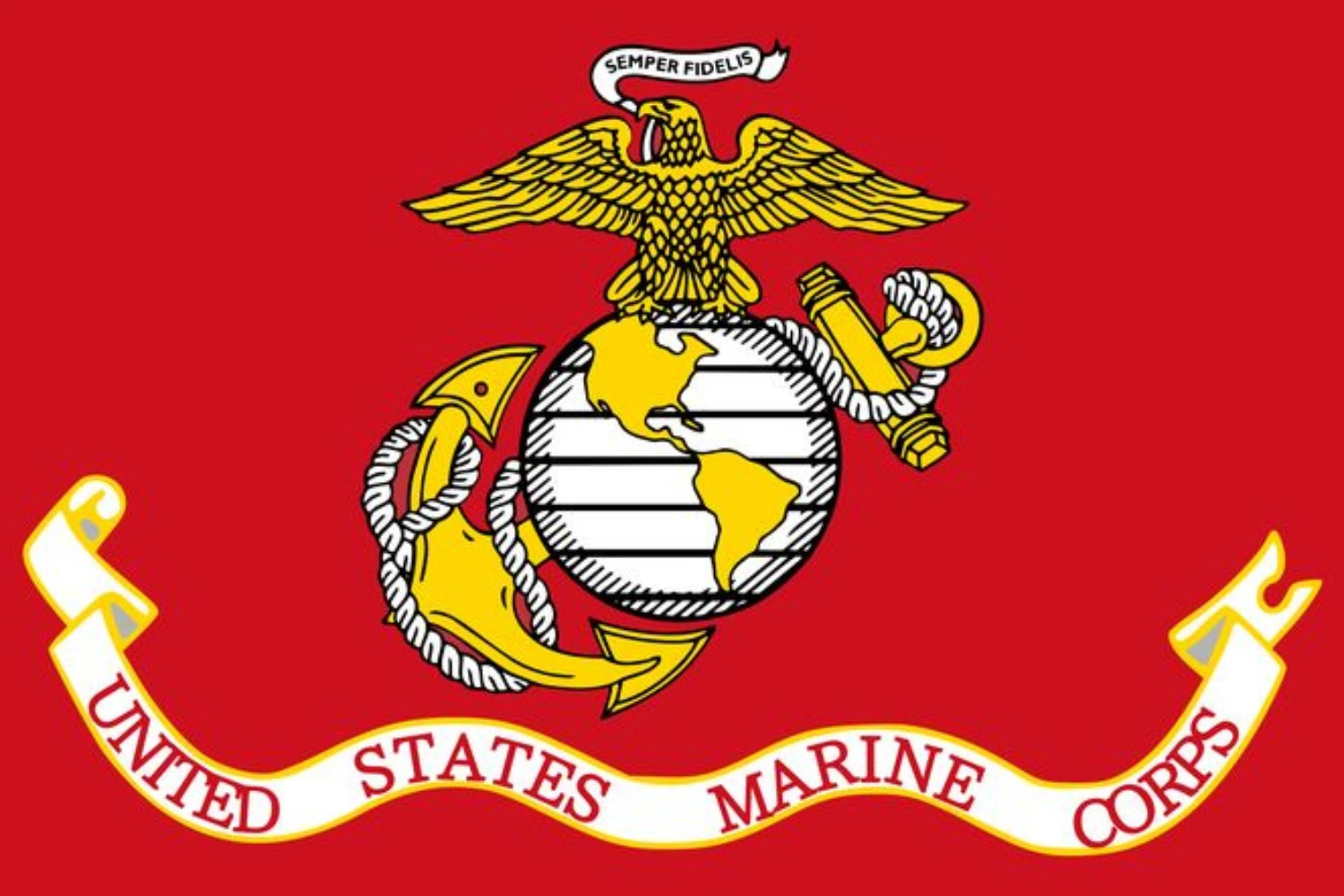The United States Marine Corps flag stands as one of the most recognizable military symbols in America, representing centuries of honor, courage, and commitment. Whether you’re a proud Marine, military family member, or patriotic American looking to display this iconic flag, understanding its rich history and proper protocols enhances its significance.
The Rich History Behind the Marine Corps Flag
The Marine Corps flag has evolved significantly since the Corps’ establishment in 1775. The current design, officially adopted in 1939, features the iconic Eagle, Globe, and Anchor emblem centered on a scarlet field with gold fringe. This scarlet red color, known as “Marine Corps Red,” has deep historical roots dating back to the British Royal Marines, whose traditions influenced early American Marines.
The flag’s design reflects the Marine Corps’ unique position as an amphibious force capable of fighting on land and sea. Its striking appearance has made it a powerful symbol during military ceremonies, parades, and official functions throughout American history.
The Marine Corps Flag Design and Symbolism
The Eagle, Globe, and Anchor Emblem
At the heart of the USMC flag lies the legendary Eagle, Globe, and Anchor (EGA) emblem. Each element carries profound meaning:
- The Eagle: Represents the United States and the Marines’ role as defenders of the nation
- The Globe: Symbolizes worldwide service and readiness to serve in any corner of the earth
- The Anchor: Honors the Navy heritage and amphibious capabilities of the Marine Corps
Colors and Their Significance
The scarlet background isn’t just aesthetically striking—it represents the blood shed by Marines in defense of their country. The gold fringe and emblem colors symbolize excellence and achievement, reflecting the Corps’ elite status among military branches.
Proper Marine Corps Flag Display and Etiquette
Indoor Display Guidelines
When displaying the Marine Corps flag indoors, proper protocol dictates specific positioning. The flag should be displayed to the right of the American flag when both are present. During ceremonies, the Marine Corps flag takes precedence over other service flags based on the order of establishment of military branches.
Outdoor Flag Display Protocol
For outdoor display, the Marine Corps flag should be flown below the American flag on the same pole or on a separate pole of equal or lesser height. The flag should be illuminated if displayed at night and should never touch the ground or be displayed in inclement weather unless it’s an all-weather flag.
Where to Buy Authentic Marine Corps Flags
Official Military Suppliers
For authentic USMC flags, consider purchasing from official military suppliers or Marine Corps Exchange (MCX) locations. These sources ensure proper specifications, materials, and construction quality that meet military standards.
Quality Considerations for Marine Corps Flags
When shopping for a Marine Corps flag, look for:
- Heavy-duty nylon or cotton bunting construction
- Properly positioned and sized EGA emblem
- Accurate scarlet coloring
- Reinforced grommets for outdoor display
- Made in USA certification for authenticity
Marine Corps Flag Sizes and Specifications
Standard Marine Corps flags come in various sizes to accommodate different display needs:
- 3′ x 5′ for residential display
- 4′ x 6′ for larger outdoor installations
- 5′ x 8′ and 6′ x 10′ for institutional use
The official specifications require the EGA emblem to be positioned precisely in the center, with specific proportional requirements for authentic reproduction.
Frequently Asked Questions
Q: Can civilians display the Marine Corps flag?
A: Yes, civilians can respectfully display the Marine Corps flag to show support for the Marines or honor family members who served. However, it should always be displayed with proper respect and protocol.
Q: What’s the difference between indoor and outdoor Marine Corps flags?
A: Indoor flags typically feature gold fringe and are made from lighter materials, while outdoor flags are constructed from weather-resistant materials without fringe to prevent damage from wind and weather.
Q: How should I care for my Marine Corps flag?
A: Regular cleaning with mild detergent, proper storage when not displayed, and prompt replacement when showing signs of wear help maintain the flag’s dignity and appearance.
Q: Can the Marine Corps flag be flown at half-staff?
A: Yes, the Marine Corps flag should be lowered to half-staff when the American flag is at half-staff, or during specific Marine Corps mourning periods as directed by military protocol.
Q: Where can I find official Marine Corps flag display guidelines?
A: The Marine Corps Manual and official USMC publications provide detailed flag display protocols. Military installations and veteran organizations are also excellent resources for proper etiquette information.
Final Thoughts
The United States Marine Corps flag represents more than fabric and thread—it embodies the spirit of “Semper Fidelis” and the unwavering dedication of America’s Marines. Whether displaying it to honor a loved one’s service, showing support for our troops, or participating in patriotic celebrations, understanding the flag’s history and proper display protocols ensures this powerful symbol receives the respect it deserves.
By choosing authentic, high-quality Marine Corps flags and following proper display etiquette, we help preserve the dignity and meaning behind this cherished military symbol for future generations of Americans to appreciate and honor.














